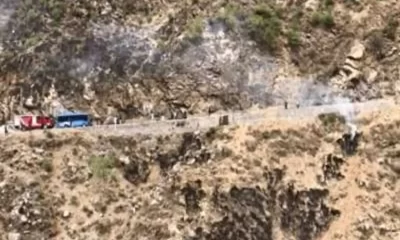Latest world news
World Bank fails to reach agreement with Pakistan on Indus Waters dispute
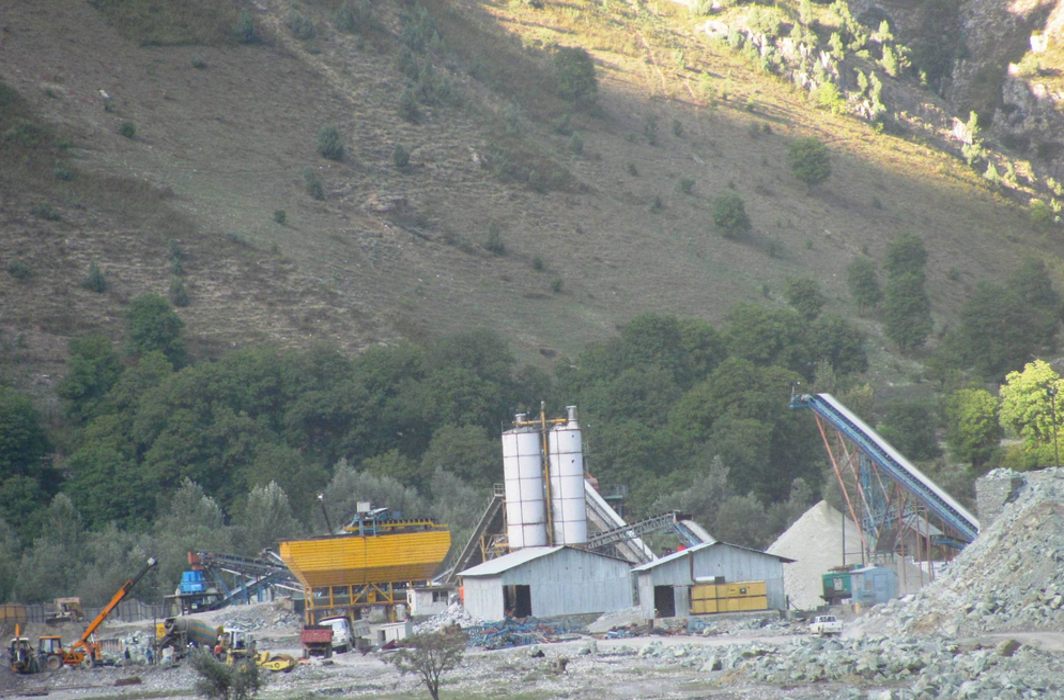
kishangangaThe World Bank on Tuesday failed to reach a consensus with the Pakistani delegation on the future of the Indus Waters Treaty and the way forward and said that its role in the matter was limited and procedural.
The Indus Waters Treaty, inked in 1960 with World Bank mediation, governs the share of waters of six rivers between India and Pakistan. According to the pact, India controls Beas, Ravi and Sutlej while Pakistan holds reign over Indus, Chenab and Jhelum.
“The World Bank will continue to work with both countries to resolve the issues in an amicable manner and in line with the Treaty provisions,” a statement said.
On May 21, state-run Radio Pakistan had reported that Islamabad would approach the World Bank after Prime Minister Narendra Modi inaugurated the Kishanganga hydroelectric power station on May 19 during his visit to Jammu and Kashmir. Pakistan alleged that the construction of the dam violates the treaty, claiming that the project on a river flowing into Pakistan will disrupt water supplies.
A high-powered Pakistani delegation led by Attorney General Ashtar Ausaf Ali met with World Bank Chief Executive Officer Kristalina Georgieva and other senior officials on Monday and Tuesday.
During the meetings, held at Pakistan’s request to discuss issues regarding the Indus Waters Treaty and opportunities within the treaty to seek an amicable resolution, “several procedural options” for resolving the disagreement over the interpretation of the treaty’s provisions were discussed, the Bank said.
“While an agreement on the way forward was not reached at the conclusion of the meetings, the World Bank will continue to work with both countries to resolve the issues in an amicable manner and in line with the treaty provisions,” the Bank said in a statement at the end of the talks.
“The delegation of the Government of Pakistan also shared with the Bank their concerns about the recent inauguration of the Kishanganga hydroelectric plant,” the statement said.
The project, located at Bandipore in North Kashmir, envisages diversion of water of Kishan Ganga river to underground power house through a 23.25-km-long head race tunnel to generate 1713 million units per annum.
The Kishanganga project was started in 2007 but on May 17, 2010, Pakistan moved for international arbitration against India under the provisions of the Indus Waters Treaty.
The Hague-based International Court of Arbitration allowed India in 2013 to go ahead with construction of the project in North Kashmir and upheld India’s right under the bilateral Indus Waters Treaty to divert waters from the Kishanganga for power generation in Jammu and Kashmir.
The international court, however, decided that India shall release a minimum flow of nine cubic metres per second into the Kishanganga river (known as Neelam in Pakistan) at all times to maintain environmental flows.
Islamabad had been raising objections over the design of the 330 MW Kishanganga hydroelectric project, saying it is not in line with the criteria laid down under the Indus Waters Treaty between the two countries. But, India says the project design was well within parameters of the treaty.
In January 2017, Pakistan had asked India to suspend the ongoing construction of the Kishanganga and Ratle hydro-power projects. It asked the World Bank to set up a court of arbitration to mediate the dispute over the Indus Waters Treaty.
In August, the World Bank said India was allowed to construct hydroelectric power plants on the tributaries of the Jhelum and Chenab rivers under the treaty, but with certain restrictions.
India and Pakistan, however, disagree about which features of the hydroelectric power plants could violate the provisions of the treaty.
Latest world news
World Earth Day 2024: Google Doodle showcases aerial view of planet’s natural beauty
Google celebrated Earth Day 2024 with a special doodle featuring an aerial view of our planet’s biodiversity.
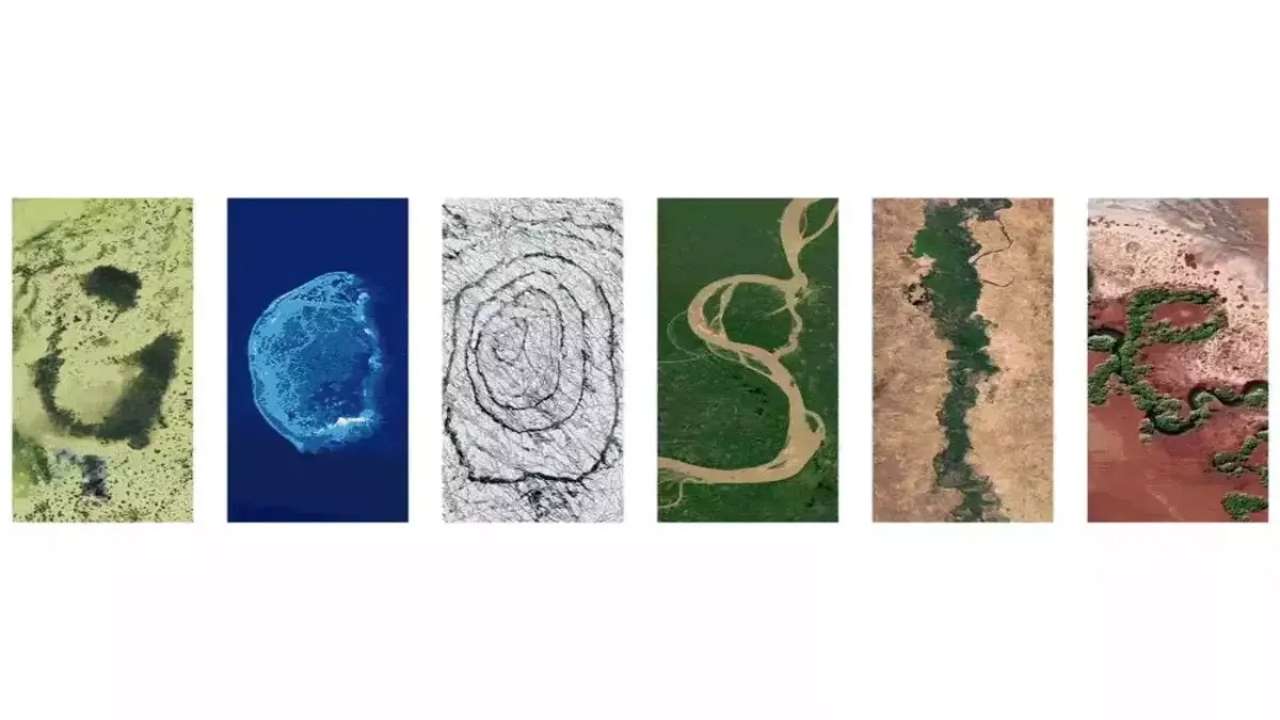
Google shared a doodle today to celebrate World Earth Day 2024, which showcased aerial photos of the planet’s biodiversity and natural beauty. Google reminded us of the importance of protecting planet earth for future generations with the help of this doodle.
The Google letters depict specific locations across the globe where people, communities, and governments work every day to help protect the planet’s natural beauty, biodiversity, and resources, according to the explanation of the annual Earth Day 2024 doodle on their website.
It said, these examples remind us that there’s much more to do to address the climate crisis and biodiversity loss, but also offer the promise of hope and optimism.
The islands of Turks and Caicos are represented by the letter “G.” The islands’ conservation efforts are concentrated on protecting important regions for biodiversity and addressing persistent environmental problems.
The largest reef in the southern Gulf of Mexico and a UNESCO biosphere reserve, Scorpion Reef National Park, is represented by the letter “O” in the Mexican flag.
The letter “O” features Iceland’s Vatnajokull National Park, which was designated as a national park in 2008 following decades of advocacy. The ecology within and surrounding the biggest glacier in Europe is safeguarded by this UNESCO World Heritage Site.
The letter “G” has the Jau National Park in Brazil on it. It is a UNESCO World Heritage Site and one of the biggest forest reserves in South America.
The Great Green Wall of Nigeria is represented by the letter “L,” and the Pilbara Islands Nature Reserves of Australia are represented by the letter “E.”
Meanwhile, Earth Day is a worldwide event that promotes protection of the environment every year. April 22 serves as a reminder of the importance of conservation efforts and sustainable practices to guarantee a healthier world and a brighter future.
The occasion inspires people across the world to come together and take action to protect the environment, strengthening our bonds with nature and promoting good change.
Latest world news
Bigg Boss 14 contestant Rahul Vaidya struggles walking in knee deep water, compares Dubai rains with Mumbai floods
Singer and TV personality Rahul Vaidya was recently stranded in the Dubai rains.
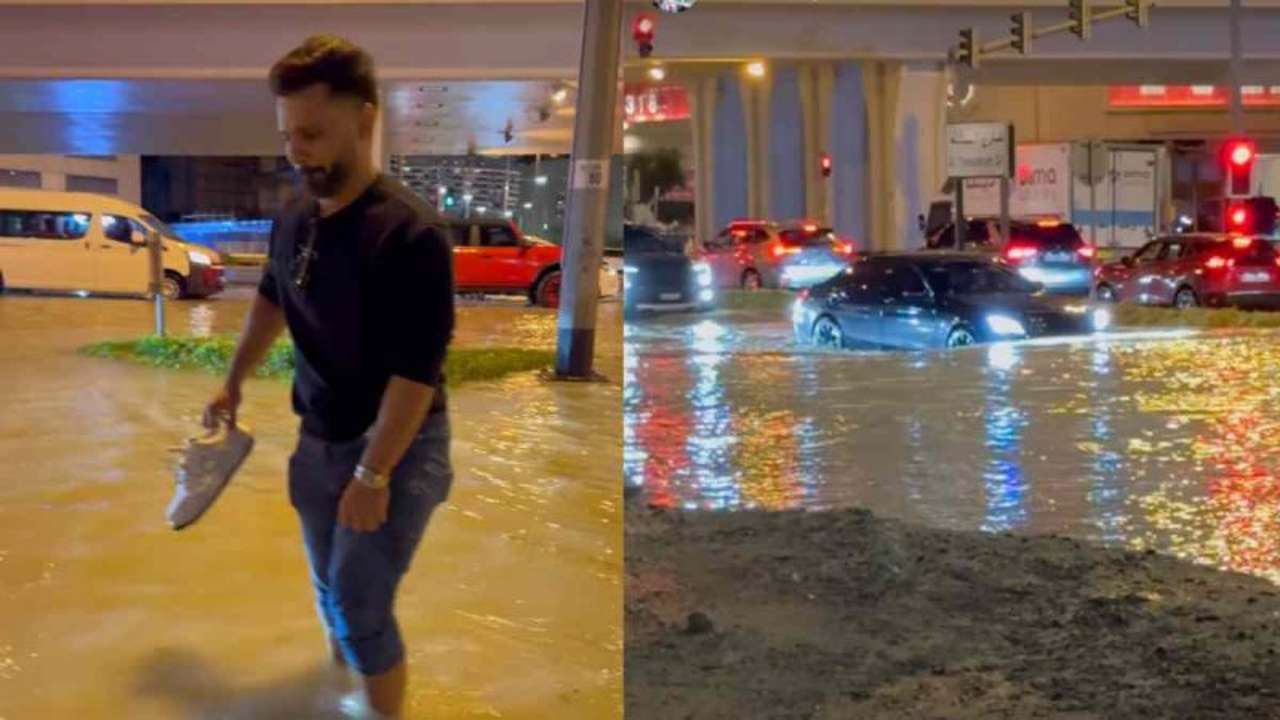
Rahul Vaidya, who was in Dubai ahead of his show which was scheduled to take place today, left the country due to heavy rains and reached Kolkata. The artist shared on social media his encounters in the UAE city, including challenges like walking through knee-deep water. Rahul provided an update regarding the heavy rainfall in Dubai on his Instagram profile.
The Bigg Boss 14 contestant revealed that he was in Kolkata and prepared to do an evening performance. Recalling the terrifying period he went through, Vaidya said there was a lot of confusion and panic in Dubai. The situation was similar to that when heavy floods hit Mumbai in 2005.
Vaiday also posted seval other images and videos of cars that were underwater and flooded roadways. The Bigg Boss 14 contestant, who shared his ordeal, claimed that even though it had just rained for two hours, the situation was dire.
In one of the video, which went viral he can be seen struggling in walking in knee-deep water. He can be also seen holding his sneakers in one hand and with other hand he was seen managing other things.
This is the result of the two hours of rain that it had, he can be heard saying in the video. Vidya also said he dosen’t believe Dubai is accustomed to a lot of rain. Everything had stopped working, he remarked.
After taking part in the first season of the singing reality show Indian Idol, Rahul Vaidya gained widespread recognition. In addition to Bigg Boss, he took part in Khatron Ke Khiladi 11.
Meanwhile, heavy rains that triggered flooding in the UAE and Bahrain, which left 18 people dead in Oman on Sunday and Monday, have paralyzed the financial hub of the Middle East, Dubai.
A lot of incoming flights were diverted from Dubai’s international airport because of the rain. At 7:26 p.m., the busiest airport in the world for foreign visitors stopped accepting new arrivals; a gradual resumption was announced for more than two hours later.
Images of planes navigating flooded tarmacs are making the rounds on social media.
According to pictures shared on social media, the flagship malls Dubai Mall and Mall of the Emirates both experienced heavy floods, while at least one Dubai Metro station had water up to the ankles.
There were several road collapses, severe flooding in residential areas, and numerous reports of leaks from windows, doors, and roofs.
Due to the unfavourable weather, schools around the United Arab Emirates were forced to close, and as more storms are predicted, the closures are anticipated to last until Wednesday. The government of Dubai allowed its staff to work remotely till this Wednesday.
Latest world news
Dubai sky turns green during storm in UAE, video goes viral
The UAE witnessed record-breaking rainfall on Tuesday and the National Centre of Meteorology recorded 254 mm of rainfall in less than 24 hrs in the Khatm Al Shakla area in Al Ain.
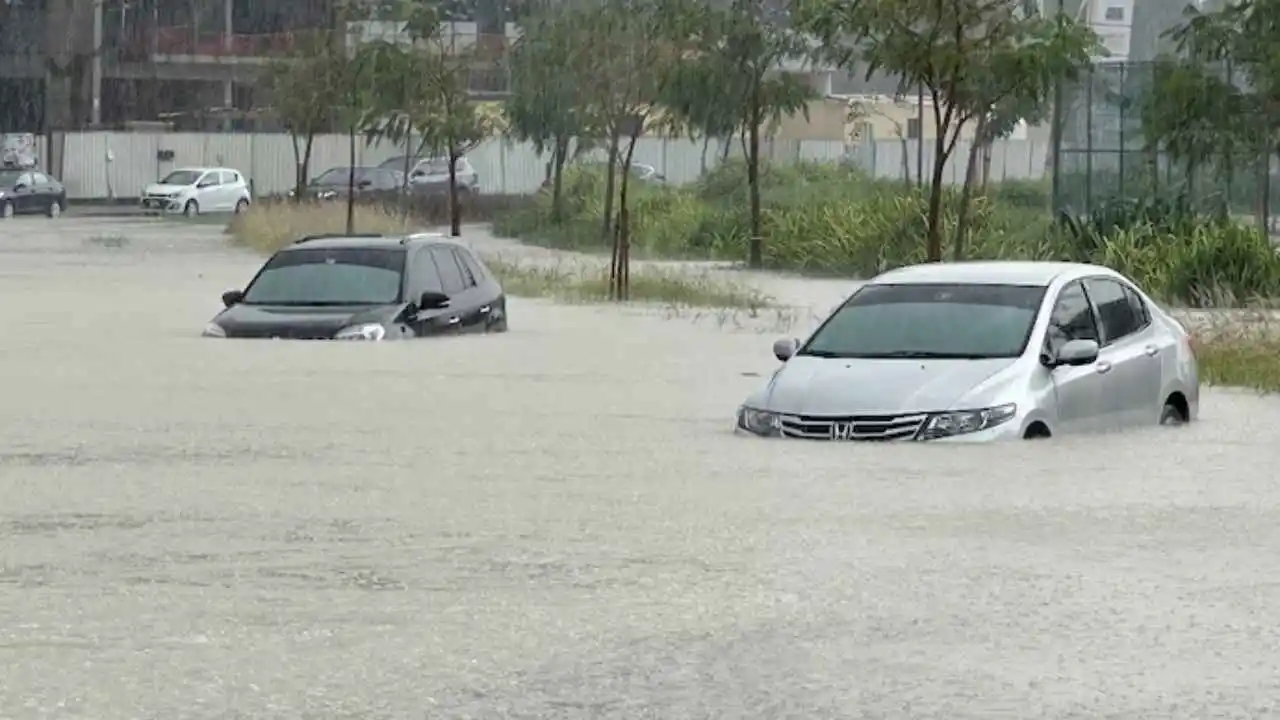
1 person was killed in UAE as it witnessed heavy rainfall on Tuesday, stranding commuters, flooding roads, disrupting trains and flights and resulting in water leakage from mall ceilings. The UAE witnessed record-breaking rainfall on Tuesday and the National Centre of Meteorology recorded 254 mm of rainfall in less than 24 hrs in the Khatm Al Shakla area in Al Ain. It is being said that the rainfall was the highest documented since the start of data collection in 1949.
The heavy rainfall in UAE came days after a similar situation in neighbouring Oman, where 13 people were killed in flash floods. Many parts of Oman saw torrential rains, which caused students to be trapped in buses and swept away motorists and trapped people in their homes.
Videos from Dubai circulating on social media showed widespread waterlogging on roads in Abu Dhabi, Dubai and other important cities. This left daily commuters in cars and other vehicles struggling to get back home. Dubai metro station too was seen flooded and closed.
One such video circulating on social media shows the aerial view of the city of Dubai from the top of a building. In the video the stormy winds are seen blowing over the city of Dubai. As the storm intensifies the Dubai sky turns green and ultimately gets covered by heavy rainfall. The video has gone viral on social media with more than 1.1 million views.
Another video showed water leakage from the ceilings of shopping malls, flooding the floors and destroying goods. A video which was shot in the famous Mall of the Emirates, showed pieces of ceiling falling as the rainwater gushed inside. Videos from many outlets of the Deira City Centre mall chain showed escalators being rendered unusable. Majid Al Futtaim, the company which owns the Mall of Emirates, said that the shopping complexes have been kept open and the customers are being sent away from the flooded areas.
-

 Entertainment10 hours ago
Entertainment10 hours agoOn wife Anushka Sharma’s birthday, Virat Kohli says he would’ve been lost without her
-

 Entertainment9 hours ago
Entertainment9 hours agoPushpa Pushpa: Allu Arjun starrer Pushpa 2 first song released
-

 Cricket news15 hours ago
Cricket news15 hours agoK Srikkanth slams Rinku Singh’s exclusion from T20 World Cup squad, says Rinku Singh has been made a scapegoat
-

 Cricket news16 hours ago
Cricket news16 hours agoIPL 2024: Marcus Stoinis scores half century to help Lucknow Super Giants beat Mumbai Indians by 4 wickets
-

 Entertainment15 hours ago
Entertainment15 hours agoKatrina Kaif deepfake video goes viral, social media says it is getting scary
-
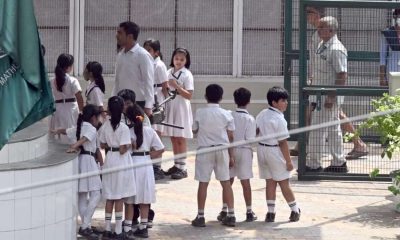
 India News16 hours ago
India News16 hours agoDPS Dwarka, Amity, several other Delhi-NCR schools get bomb threat, Central agencies launch probe
-

 2024 Lok Sabha Elections14 hours ago
2024 Lok Sabha Elections14 hours agoLok Sabha elections 2024: Anupamaa actor Rupali Ganguly joins BJP, says she feels she should also be a part of this Mahayagya
-

 2024 Lok Sabha Elections13 hours ago
2024 Lok Sabha Elections13 hours agoPriyanka Gandhi says PM Modi is far away from reality of common people, calls him an egoistic person

